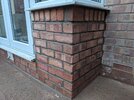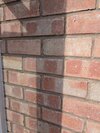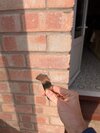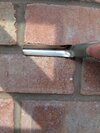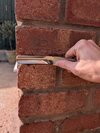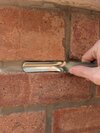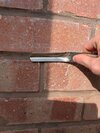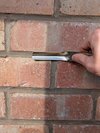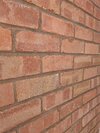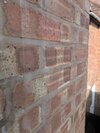- Joined
- 2 Dec 2004
- Messages
- 600
- Reaction score
- 4
- Country

Last year I repointed some brickwork sections that were badly deteriorated. The brick joints are wide and uneven. I used a curved tool to create a concave finish. I used standard building sand and cement in a 5:1 ratio with a little plasticiser, which has come out rather grey.
I attach a picture of a section I finished. I did a few square meters in total.
The thing is that the whole house needs doing and I intend to do more this year. I'm not really that happy with how it's come out, the colour seems to be wrong and I'm not sure it's the right style for the house.
The original pointing (it's hard to tell what's original) is sand/buff coloured, and I would say sharp sand not fine sand as you can see the aggregate content. Probably done with lime but maybe not. In various places it has had cement lathered over the top but even this is more buff coloured not grey.
I want to do this job right, but I'm not sure what right is. Can anyone say what colour and finish I should achieve please? I was previously advised that I don't need to use lime and a standard sand cement mix is fine, but even so I could add a colourant and go for a different surface finish like flush or use a brush to texture it a bit.
I'm happy to redo the bits I've already done but obviously now I'm starting on the rest of the house it's got to be right from the start.
Thanks.
I attach a picture of a section I finished. I did a few square meters in total.
The thing is that the whole house needs doing and I intend to do more this year. I'm not really that happy with how it's come out, the colour seems to be wrong and I'm not sure it's the right style for the house.
The original pointing (it's hard to tell what's original) is sand/buff coloured, and I would say sharp sand not fine sand as you can see the aggregate content. Probably done with lime but maybe not. In various places it has had cement lathered over the top but even this is more buff coloured not grey.
I want to do this job right, but I'm not sure what right is. Can anyone say what colour and finish I should achieve please? I was previously advised that I don't need to use lime and a standard sand cement mix is fine, but even so I could add a colourant and go for a different surface finish like flush or use a brush to texture it a bit.
I'm happy to redo the bits I've already done but obviously now I'm starting on the rest of the house it's got to be right from the start.
Thanks.

